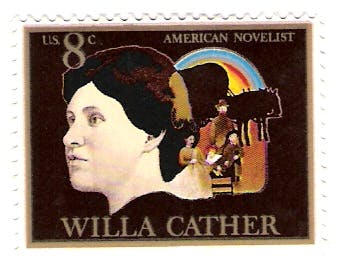Poem of the Day: ‘Fides, Spes’
The poem depicts springtime’s chancy, brief beauty in a climate of perilous weathers, and hints as well at the brevity of human joy.

Known for such novels as “My Ántonia,” “O Pioneers,” and “The Song of the Lark,” with their lyric but unsparing depictions of life on the Great Plains, Willa Cather (1873–1947) was a poet as well as a writer of fiction. Her novels, with their concern for place, examine the details of a landscape in both its matter and its moods. Her poetry also dwells in such details. “Fides, Spes” (Latin for Faith, Hope), with its undulant rhythms, trimeter and tetrameter lines alternating with dimeter in rhyming abab quatrains, depicts springtime’s chancy, brief beauty in a climate of perilous weathers, and hints as well at the brevity of human joy.
Fides, Spes
by Willa Cather
Joy is come to the little
Everywhere;
Pink to the peach and pink to the apple,
White to the pear.
Stars are come to the dogwood,
Astral, pale;
Mists are pink on the red-bud,
Veil after veil.
Flutes for the feathery locusts,
Soft as spray;
Tongues of the lovers for chestnuts, poplars,
Babbling May.
Yellow plumes for the willows’
Wind-blown hair;
Oak trees and sycamores only
Comfortless bare.
Sore from steel and the watching,
Somber and old,—
Wooing robes for the beeches, larches,
Splashed with gold;
Breath o’ love to the lilac,
Warm with noon.—
Great hearts cold when the little
Beat mad so soon.
What is their faith to bear it
Till it come,
Waiting with rain-cloud and swallow,
Frozen, dumb?
___________________________________________
With “Poem of the Day,” The New York Sun offers a daily portion of verse selected by the Sun’s poetry editor, Joseph Bottum of Dakota State University, with the help of the North Carolina poet, Sally Thomas. Tied to the day, or the season, or just individual taste, the poems will be typically drawn from the lesser-known portion of the history of English verse. In the coming months we will be reaching out to contemporary poets for examples of current, primarily formalist work, to show that poetry can still serve as a delight to the ear, an instruction to the mind, and a tonic for the soul.
